Bank holiday weirdness: An array of strange English events
- Published
As we approach summer and take advantage of the quick succession of bank holidays thousands of us will head out to witness some of England's more unique events. Many are steeped in tradition and can be traced back for centuries. Here are a few of them:

Dorset Knob Throwing

Dorset knobs are usually eaten with Blue Vinney cheese or honey and clotted cream - known as thunder and lightning
Last year more than 700 "biscuit athletes" entered the throwing competition in Dorset which attracted more than 5,000 spectators.
The Dorset Knob Throwing contest in Cattistock - between Dorchester and Yeovil - involves participants tossing a locally made, triple-baked biscuit to the best of their ability.
The spherical missiles have to be thrown underarm and one of the competitor's feet must remain on the ground for it to count.
Organiser Nigel Collins said while the action of throwing the Dorset knob does not have a historic significance, the "unique" biscuit has been made by the Moores family since 1880.
The idea of throwing them came to Mr Collins as he searched for a "unique selling point" to help raise money for local sporting facilities.
"I suddenly said 'I've got it, we can throw Dorset knobs'," he said.
"I put the idea to the village and it mushroomed from there."
Other events at the Frome Valley Food Festival include a knob eating contest, a knob and spoon race, a knob-a-thon and knob darts.
The event, which started in 2008, will take place on 4 May.
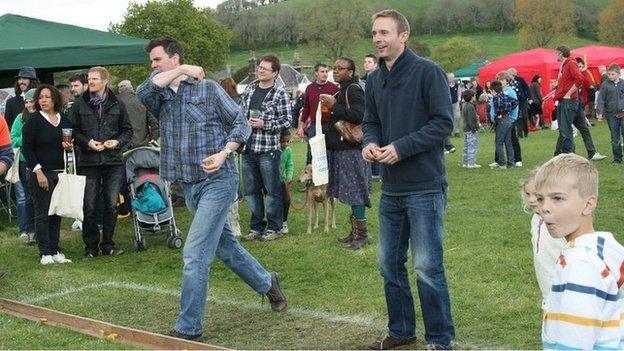
Competitors are given three knob biscuits which have to be thrown underarm

Sweeps Festival
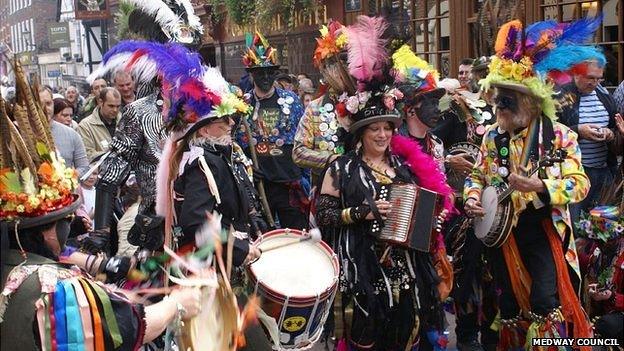
The festival dates back to the 1700s when the industrial revolution occurred
May Day was the one time of year the child chimney sweeps could dust off the soot and have some fun.
The boys would awaken the Jack-in-the-Green - a seven-foot character - at dawn on Blue Bell Hill, Chatham before parading through Rochester, Kent, collecting money.
But when the Climbing Boys' Act 1868 made it illegal to employ young boys to carry out the trade, the tradition began to fade and the final May celebration was held in the early 1900s.
After being revived in 1981 by keen historian Gordon Newton, the modern day Sweeps Festival recreates the event with a colourful mix of music and dancing.
"It dates back to the 1700s when the industrial revolution occurred," Mr Newton said.
"There was a big requirement for climbing boys and every year on May Day they traditionally used to celebrate it, by taking the Jack-on-the-Green around the city with the climbing boys.
"It was restricted to the south-east of England and was clearly reported as something that went on in the city of Rochester. The event now is unique and a genuine tradition associated with Rochester."
The three-day festival runs from 3-5 May.
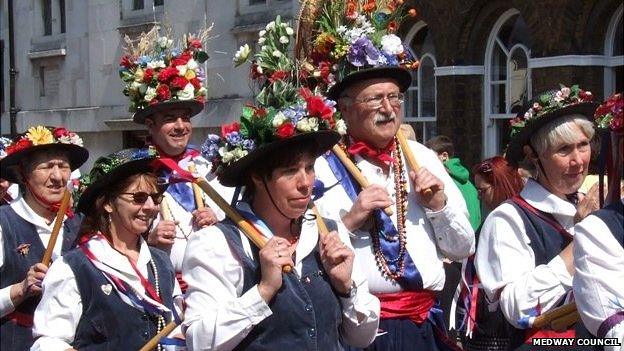
The tradition is restricted to the south-east of England

Cheese Rolling

A foam 'cheese' was used last year after police told the cheese maker she could face legal action
This extreme escapade has been going for more than two centuries and attracts participants and audiences from across the world.
Daredevil cheese chasers hurl themselves down the notoriously steep - 1:2 gradient - Cooper's Hill in Gloucestershire as they try to catch a wheel of Double Gloucester cheese.
Inevitably they tumble to the bottom, with few staying upright.
The first written evidence of cheese rolling was found in a message to the Gloucester Town Crier in 1826, though it is clear that the event was by then an old tradition.
Jean Jefferies, who has written a book about the event, has previously told the BBC she can trace the event back even further.
"We have family recollections recorded which take us back to the mid-1700s," she said.
"The story from then describes it as an event that was ongoing even at that time - no mention of it just starting... so it was probably a very local event."
The official event was axed in 2009 but has been held unofficially ever since by local enthusiasts.
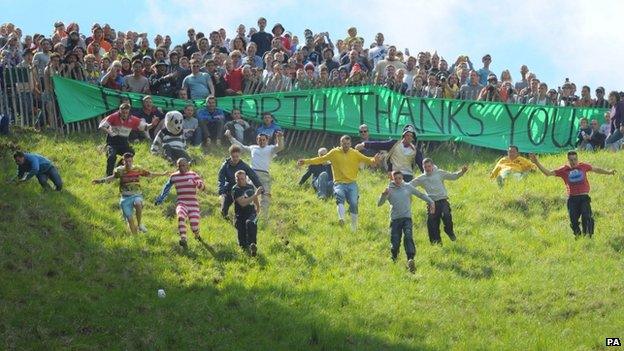
Some 3,000 spectators have gathered on Cooper's Hill in the bank holiday sunshine

Well dressing
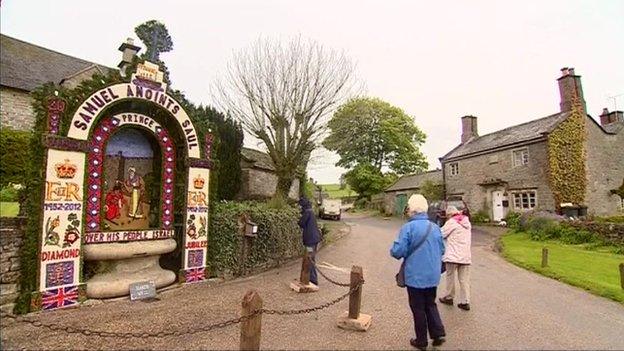
Locals create huge floral designs to dress their natural springs and wells
Well dressing is a tradition that dates back hundreds of years although its origins remain a mystery.
The wells are dressed with large framed panels decorated with elaborate mosaic-like pictures made of flower petals, seeds, grasses, leaves, tree bark, berries and moss.
It takes place predominantly around the Staffordshire and Derbyshire border between May and September.
The events see local people create huge floral designs to dress their natural springs and wells - with neighbouring villages often getting somewhat competitive.
The designs are decided upon months before they are unveiled and are not revealed until the last possible minute.
Sir Richard FitzHerbert, owner of the Tissington estate where a Well Dressings will take place over a seven-day period from 29 May this year, said 35,000 people were expected to visit the village which has a population of only 110 residents.
"Each of the six wells will take about 200 man hours to complete," he said.

The designs are not revealed until the last possible minute

Shin-Kicking (The Cotswolds Olimpicks)
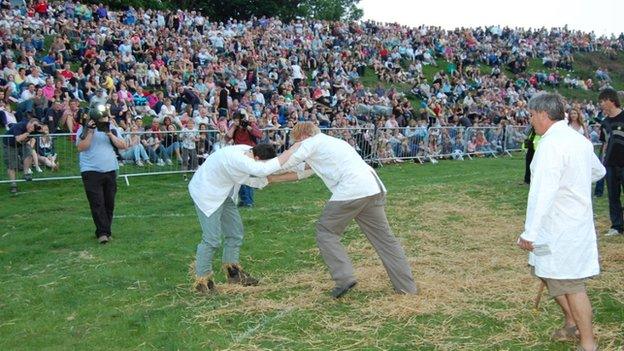
Shin-kicking is believed to have evolved from a form of Cotswold Wrestling
Shin-kicking is one of the perennial favourites at the Cotswolds Olimpick Games, as it has been for over 400 years.
Competitors face each other with just a bit of straw padding for protection.
Sizing each other up the rules state one must hold onto the opponent and kick their shins until they fall to the floor, under the watchful eye of the stickler, or referee.
The aim is to weaken an opponent by kicking his or her shins and once the legs have been weakened, a competitor may throw an opponent to the ground.
And believe it or not, it is not as painful as it used to be. In years gone by participants wore iron-tipped boots and broken legs were the norm.
The event was started in about 1611 by Robert Dover, according to chairman of the games society, Graham Greenall.
"It was almost a rebuff to the puritan attitude of the time, he just wanted people to enjoy themselves. Shin-kicking evolved from a variety of Cotswold wrestling."
The Cotswold Olimpicks are held on the Friday after the Spring Bank Holiday each year where attendances have been more than 5,000.

Water football
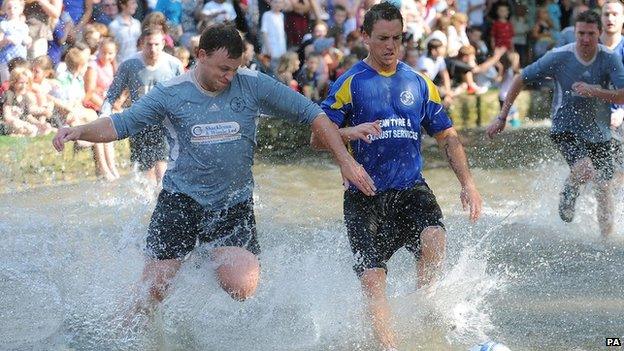
The two sides battle it out on the usually calm waters of the River Windrush in the heart of rural Gloucestershire
Taking a place on the normally peaceful banks of the River Windrush comes with some risk on the August Bank Holiday as it is invaded by teams of local football players.
The Bourton-on-the-Water Football in the River sees the six-a-side teams battling it out for victory during the 30 minute splashabout.
Each year, goalposts are set up on the river - between the Gloucestershire village's two main bridges.
The event has been taking place for more than 100 years and attracts a large crowd - who are best warned to wear their waterproofs.
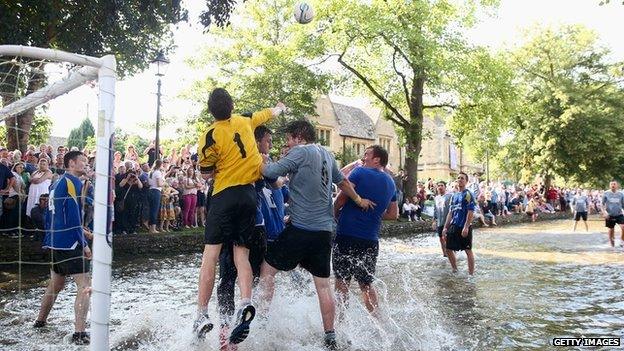
Goalposts are set up on the river for the 30-minute match

Tetbury Woolsack Races
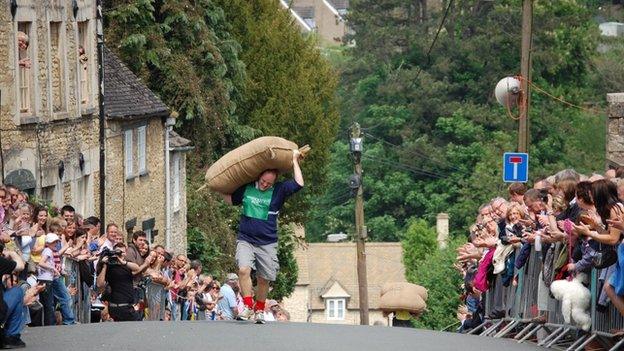
Competitors race up Gumstool Hill in Tetbury carrying 60lb woolsacks
The races have no greater aim than for people to demonstrate their strength and fitness by racing while carrying a sack of wool - up and down a hill that reaches a gradient of 1:4.
It is thought that the races were started in the 17th Century by young drovers showing off to local women by running up the hill carrying a woolsack and the Tetbury Woolsack Races are a big part of Gloucestershire's history.
Every May thousands of people line the streets of Tetbury - which thrived in the Middle Ages as a market for wool - to watch those willing to race between the Crown Inn pub at the top of Gumstool Hill and the Royal Oak at the bottom.
"It's supposed to have started in the Middle Ages. Drovers taking their animals to market went to have a drink in one of the local pubs and wanted to show off their prowess to their girlfriends," said one of the organisers, Stephen Hirst.
Men have to carry a 60lb (27kg) woolsack, while women are presented with one just over half that size.
Race day is the 26 May.

It is thought that the races were started in the 17th Century by young drovers showing off to local women
- Published27 August 2013
- Published4 June 2012

- Published27 May 2013
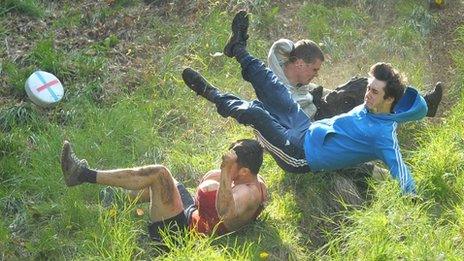
- Published5 May 2013
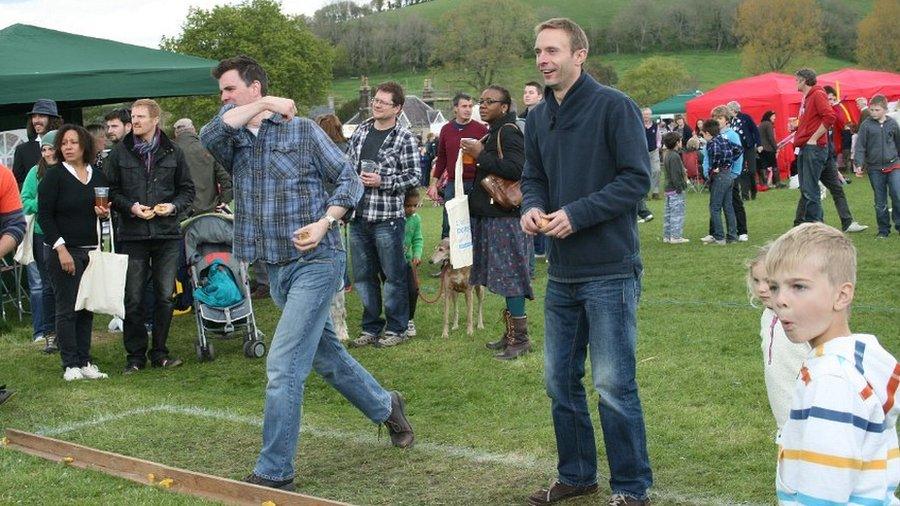
- Published16 December 2012
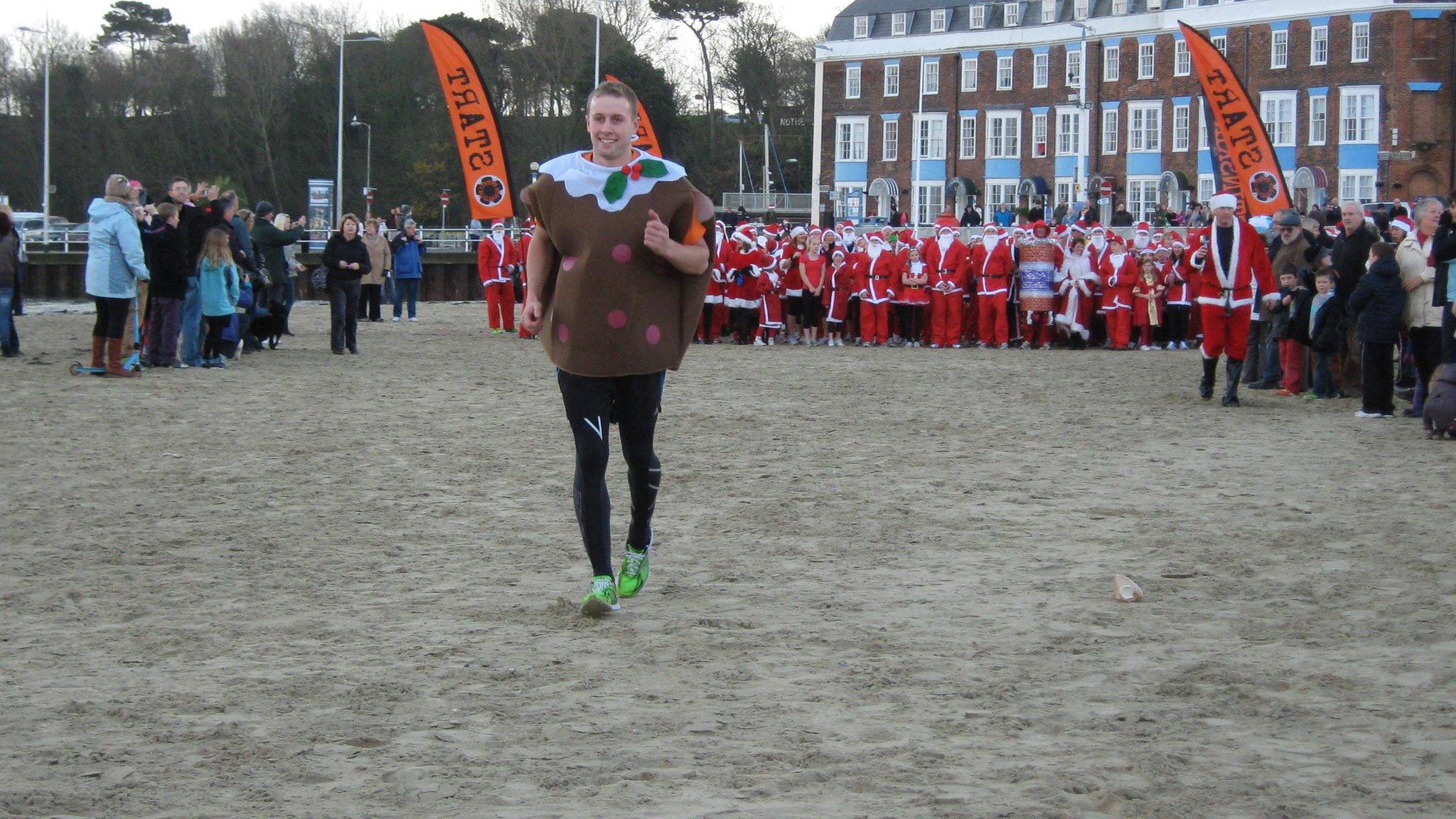
- Published4 August 2012
